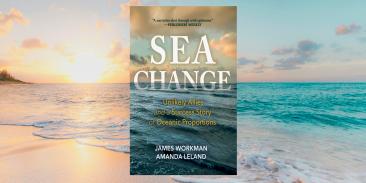Designing a meaningful global stocktake
A properly executed stocktake can help achieve the goals of the Paris Agreement.
The Paris Agreement requires parties to undertake a global stocktake, or GST, every five years to assess collective progress toward the agreement’s long-term mitigation, adaptation, and finance goals.
A well-informed stocktake process could be a meaningful contribution to the Paris Agreement’s cycle of ambition by providing countries with the impetus and information to enhance their nationally determined contributions (NDCs). This could help to set the world on the right path to achieve the goals of the Paris Agreement.
Our analysis: Why we need a global stocktake that works
Environmental Defense Fund and the Center for Climate and Energy Solutions (C2ES) are working together on a project to help shape the global stocktake.
Learn more at C2ES’s global stocktake portal
Resources
Designing a global stocktake
Developed with feedback from several brainstorming sessions with key experts, this paper examines how the GST can deliver a meaningful outcome in an evolving context, takes into account emerging gaps and challenges, and sets out design options.
- Designing a Meaningful Global Stocktake Under the Paris Agreement (C2ES)
- Distilling Critical Signals from the Global Stocktake
Landscape analyses
To provide the basis for the opportunities framework and engagement strategy, C2ES and EDF have developed three landscape analyses, or surveys of current and emerging research, data, frameworks, initiatives, technologies, policy options, and processes within and without the UNFCCC across mitigation, adaptation, and finance.
- Mitigation Landscape Analysis: Themes and Trends Working Paper
- Landscape Analysis of Adaptation Opportunities for Climate Ambition Working Paper
- Climate Finance Landscape Analysis: Themes and Trends
Event recordings
MEDIA CONTACT
Raul Arce Contreras
(240) 480-1545 (mobile)
Further reading
- Blog post
3 considerations for climate negotiators as they close out the first Global Stocktake
- Fact sheet
Understanding the Global Stocktake
- Blog post
The ambition-raising opportunity of reducing methane emissions
- Report
Submission to the Global Stocktake on the Role of Nature
- Report
Submission to the Global Stocktake on addressing Methane Emissions
- Blog post
Countries must heed IPCC reports as they review collective progress under the global stocktake
- Blog post
Why we need a global stocktake that works










